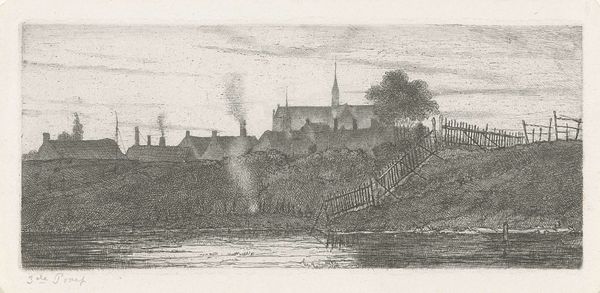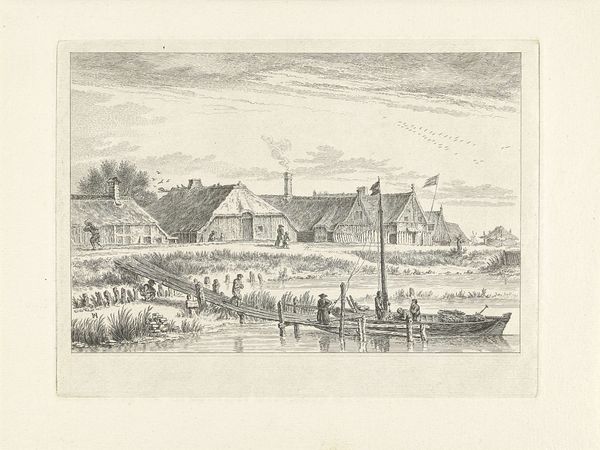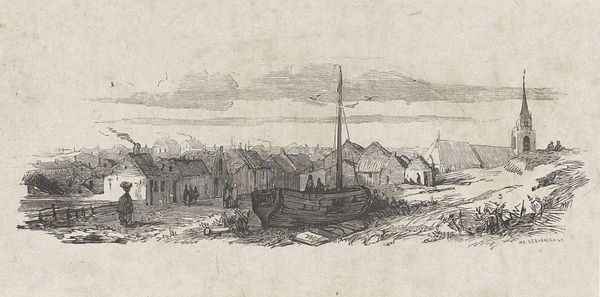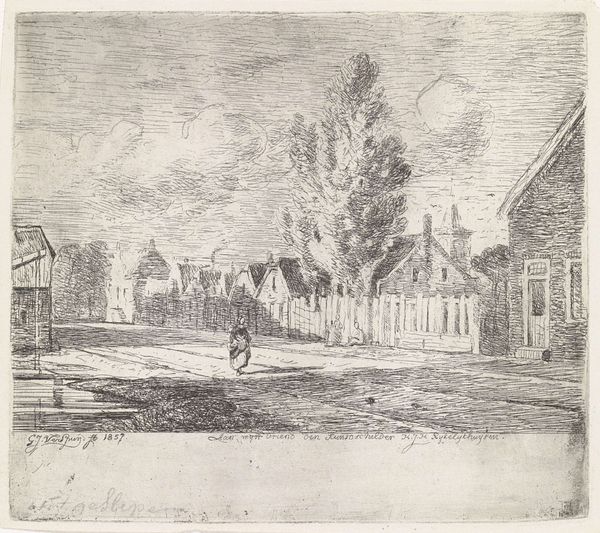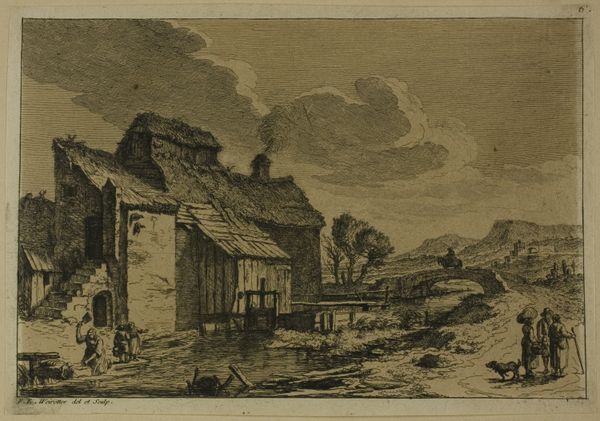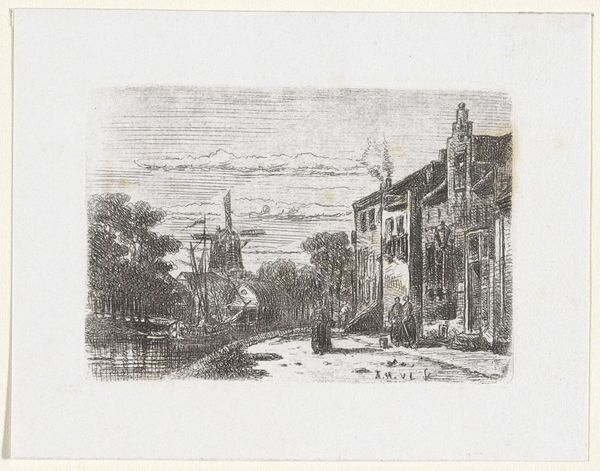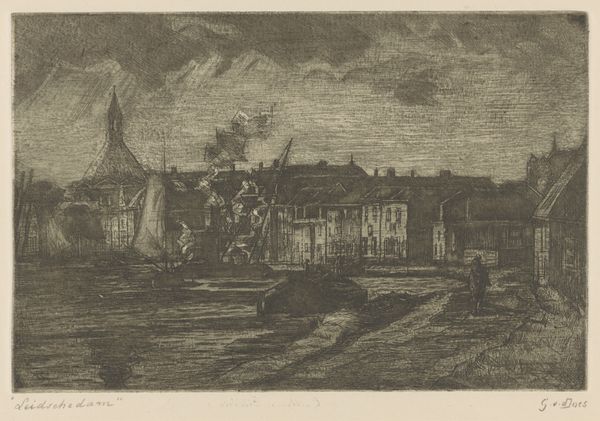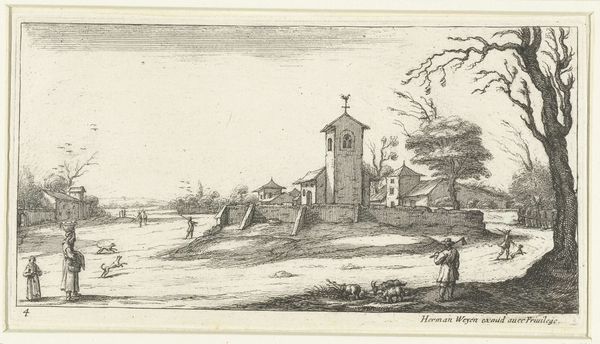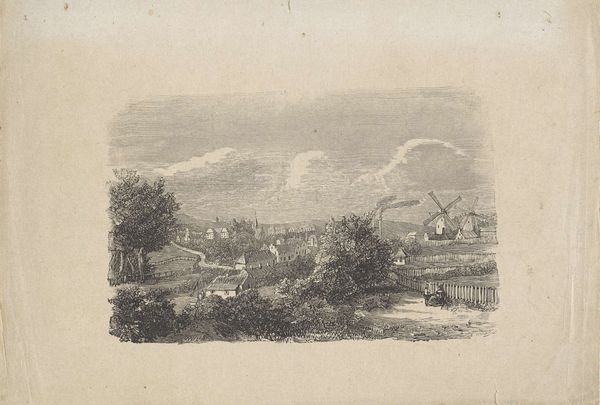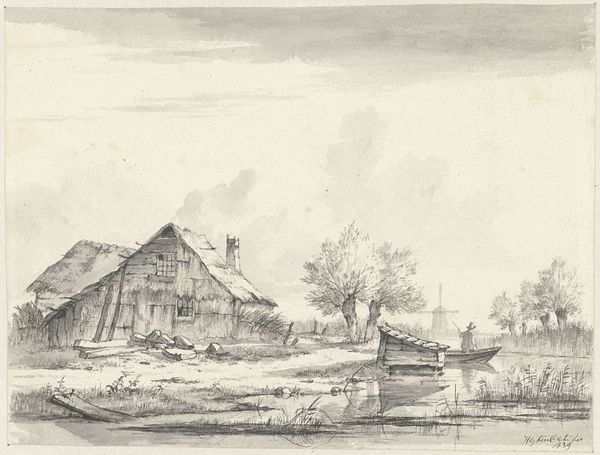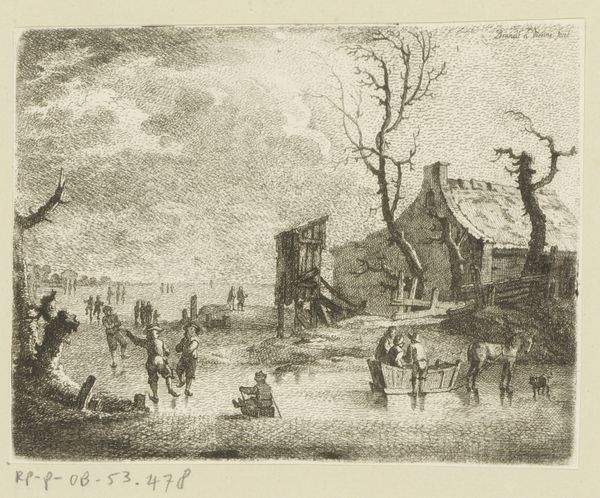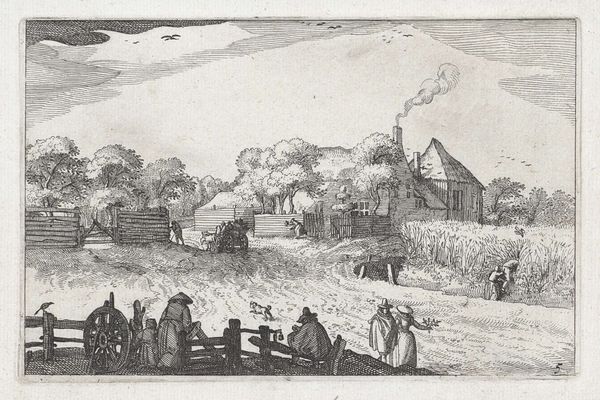
print, etching
# print
#
etching
#
landscape
#
german-expressionism
#
symbolism
Dimensions: plate: 13.3 x 17.7 cm (5 1/4 x 6 15/16 in.) sheet: 27.5 x 34.5 cm (10 13/16 x 13 9/16 in.)
Copyright: National Gallery of Art: CC0 1.0
Curator: Editor: Here we have Karl Hofer's "Nocturnal Crossing" from 1899, an etching that captures a rather somber scene. It feels almost dreamlike, with these shadowy figures and buildings barely defined. What stands out to you about this piece? Curator: Given its creation at the dawn of the 20th century, the etching as a medium speaks volumes. Here we see labor and industrialization reflected through Hofer’s meticulous, repetitive marks and the inherent reproducibility of the print. The democratization of images comes into play—how does this affect who gets to own or consume art? Editor: That’s interesting; I hadn’t considered the accessibility of printmaking then! The figures seem so small and anonymous against the architecture. What would that say about how individuals saw themselves in contrast to the structures that controlled them? Curator: Precisely. Consider the materiality of the copper plate, the acid bath...each element contributes to this image of labor and societal hierarchy. The "Nocturnal Crossing," made possible by technological advancement in chemical processes, shows how this technology influences experience and, in turn, artistic expression. What if this had been painted? Editor: I suppose a painting might feel more individual, perhaps highlighting skill, rather than the collective action involved in etching. Curator: Exactly. This allows us to consider the power dynamics within production. What is gained and lost in the transition to this print? Editor: That really opens up my understanding; viewing art through the lens of labor makes these prints speak in a completely different voice! Thank you for providing these alternative perspectives. Curator: Of course. Art and life; life and labour; it all converges in surprising ways when we think about materiality.
Comments
No comments
Be the first to comment and join the conversation on the ultimate creative platform.
